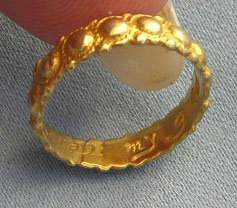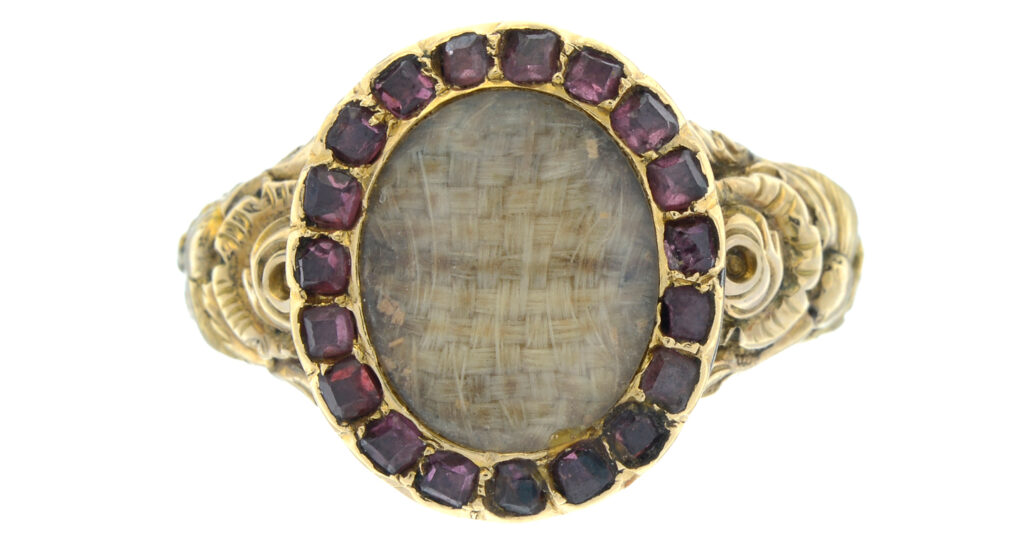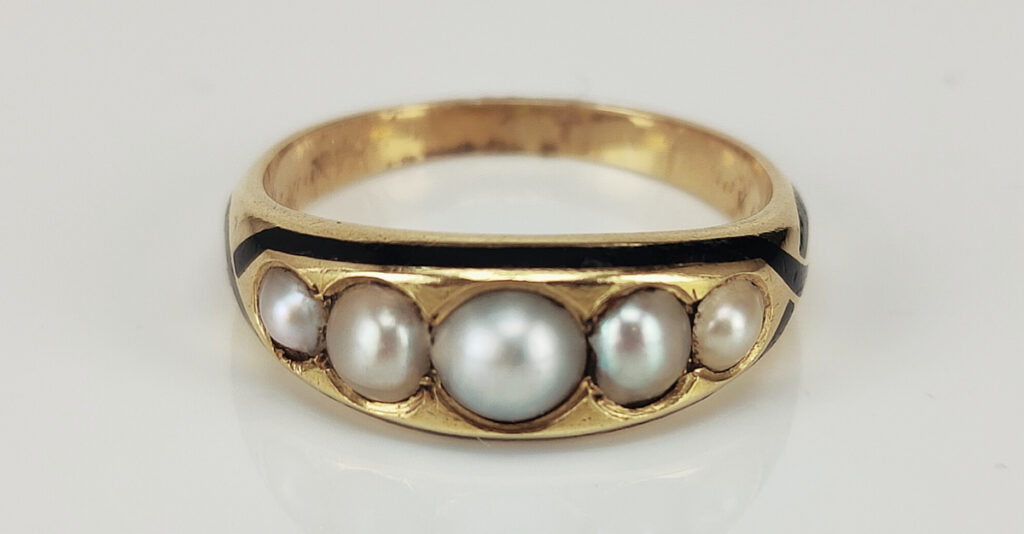Posie Rings From the 17th Century
Posie rings, otherwise known as ‘poesy’, ‘posy’ or ‘posey’, are one of the primary catalysts for the mourning and sentimental rings that generated their own industry post 1680.
Without the standardisation of the English language and the written reliance on Latin previous to the dictionary in 1755, posie rings are a remarkable time capsule for phonetically capturing their surrounding language in a jewel. From a status perspective, this utilisation of language is accessible to a strata of society that didn’t have the luxury of formalised education, opening up sentimental jewels to new levels of society. Basic sentiments of love etched into silver and gold bands could now be given as a secret love token for a growing middle class. In rings previous to the 16th century, more common would be the inscriptions written in French, Latin and Norman French.
Chapbooks, pamphlets containing popular literature, were a popular source for many of the sentiments written inside the posie rings. These cheap pamphlets grew in popularity, as they were sold cheaply (commonly a penny or halfpenny) and contained many popular ballads from the time. This pre-dates mass produced media of the early 19th century, when steam presses led to the rise of cheap newspapers. From the mid 16th century, these cheap and crudely produced booklets contained relevant popular content that varied from entertainment to political and religious content. Here, the relation of the ring to the popular literature is the key factor in understanding just how the posie’s relation to society. They were jewels that could be for the commoner, but also transient as a style of love token through society because of their simple statements.
From a design perspective, posie rings are very random in their styles. Without a popular and fluid fashion/art movement to adapt to and no major industry to produce the affectations of fashion throughout a multi-structured society, the designs are disparate and may contain popular elements or may be basic bands. This makes identification of the simple bands difficult, unless the language can be identified, but within a bracket of the 16th to early 18th centuries, elements can be identified within a set number of years.
This particular ring shows its design elements through the band and that makes it easier to put at he middle of the 17th century, a time just before the industry of mourning and sentimental jewels was to be established during the Restoration.
Look towards the nature of hair and its status as a gift in jewellery from the 17th century. Prior to the rise of the hairworking industry and its prominence in mainstream jewellery, gifts of hair were considered tokens of affection and love between two people. Bury refers to The Relique (or The Relic) by poet John Donne (1572-1631) and its very early reference to a hair bracelet:
“When my grave is broke up againe
Some second ghest to entertaine,
(For graves have learn’d that woman-head
To be to more than one a Bed)
And he that digs it, spies
A bracelet of bright haire about the bone,
Will he not let us alone,
And thinke that there a loving couple lies”
Donne speaks in metaphysical terms about the unifying nature of spiritual love, as when he and his lover are dug up, they remain the symbol for holy and eternal love. From this, the poem is an excellent perspective on the sentimentality of hairwork at the turn of the 17th century. Wearing hair was an encompassing symbol of union and love between two people.
Donne wasn’t unique in his wearing of a hair bracelet, however, as Count de Grammont viewed several people wearing hairwork bracelets in the Court of the restored Charles II, circa 1660. This ties in with the rising prominence of other sentimental jewellery at that time. From love tokens, such as posy rings, to hair woven under crystal in slides, brooches, rings and other forms of jewellery, sentimental jewellery was rapidly evolving over the 17th century. Within these forms of sentimental jewellery, the use of hair became ever more prominent. Another example from 1647/8 of the popularity of hairwork within mainstream culture can be seen in Mary Varney’s letter to Sir Raplh Varney, asking to send locks of their daughter’s hair “to make bracelets? I know you could not send a more acceptable thing than every one of your sisters a bracelet”. At the time, Ralph was living in exile in France during the Protectorate. Hair tokens within families was the more common practice, but as jewels grew as a social device, so did their nature as a personal statement.
With sentimentality and love being popular and affordable in jewellery from the 15th century and the growing act of giving oneself through a jewel or hair, posie rings are the ideal tokens of affection for their time. Be it for love or mourning, the concept of the jewel to remember someone by was cemented through the giving of a posie ring in early modern times.








